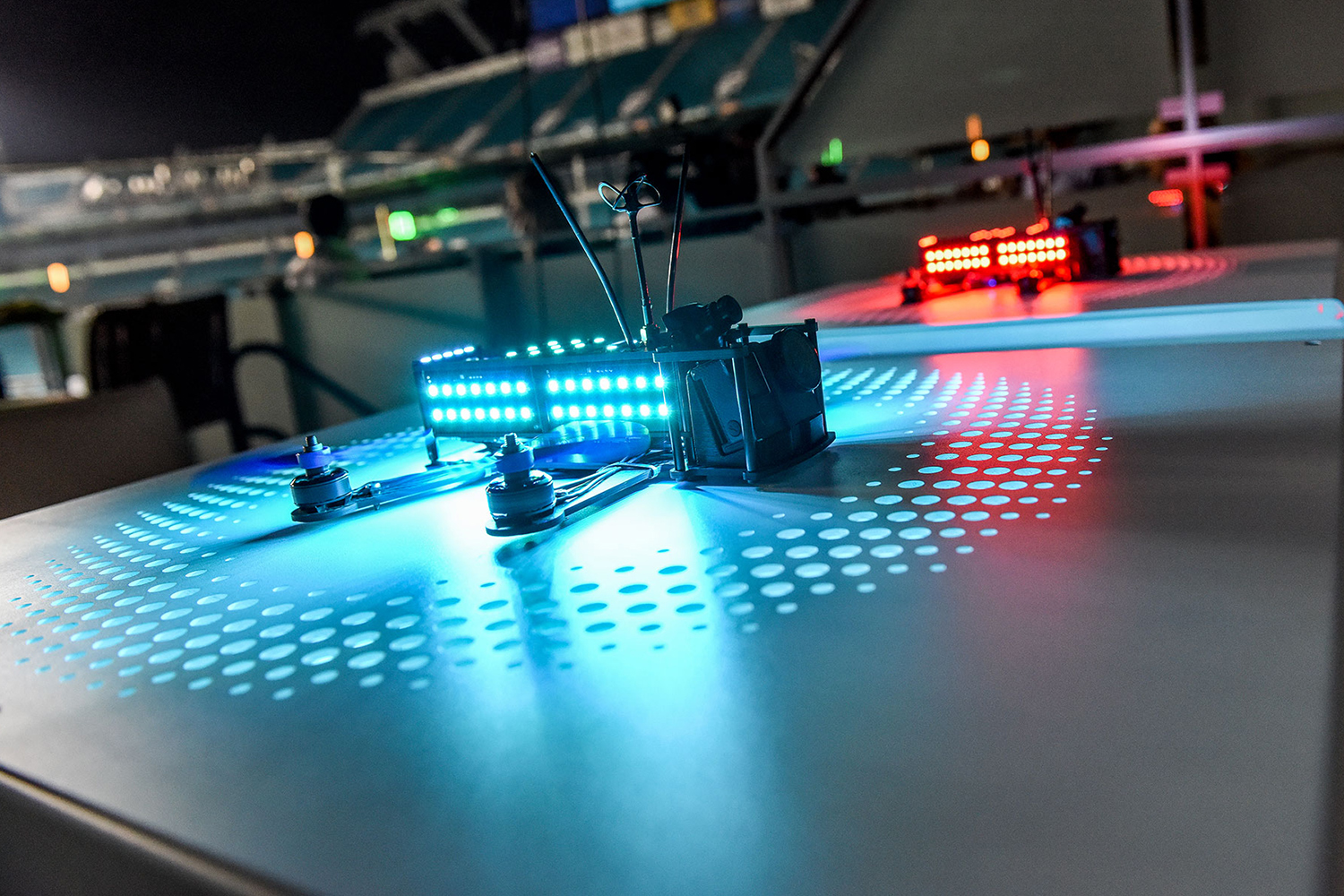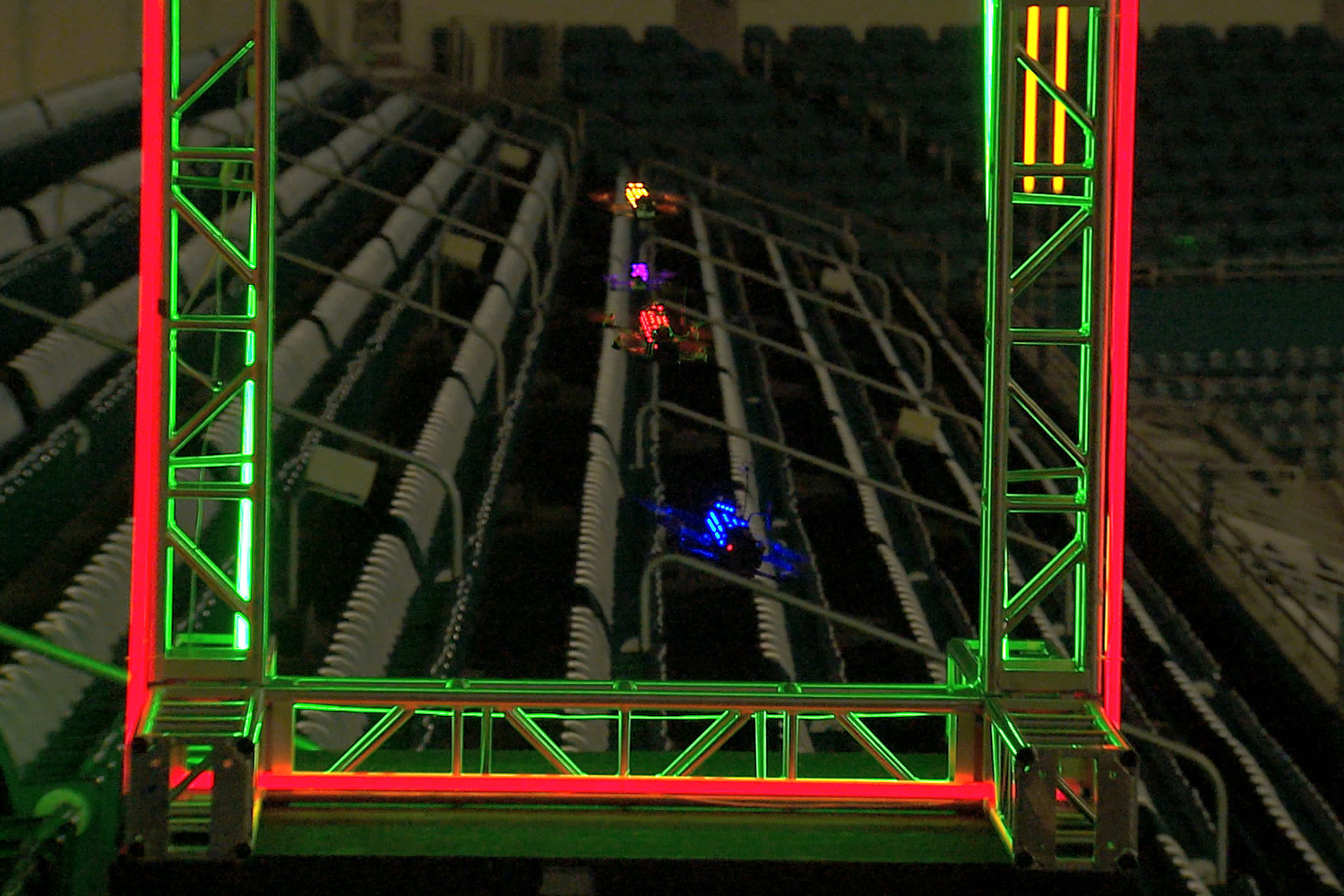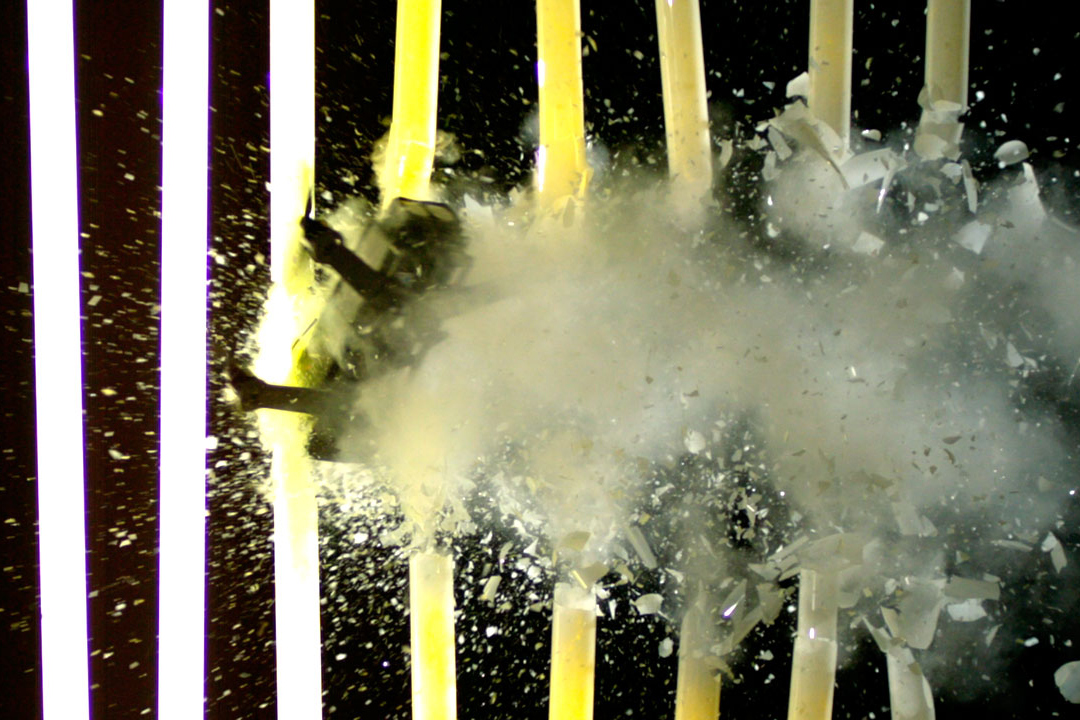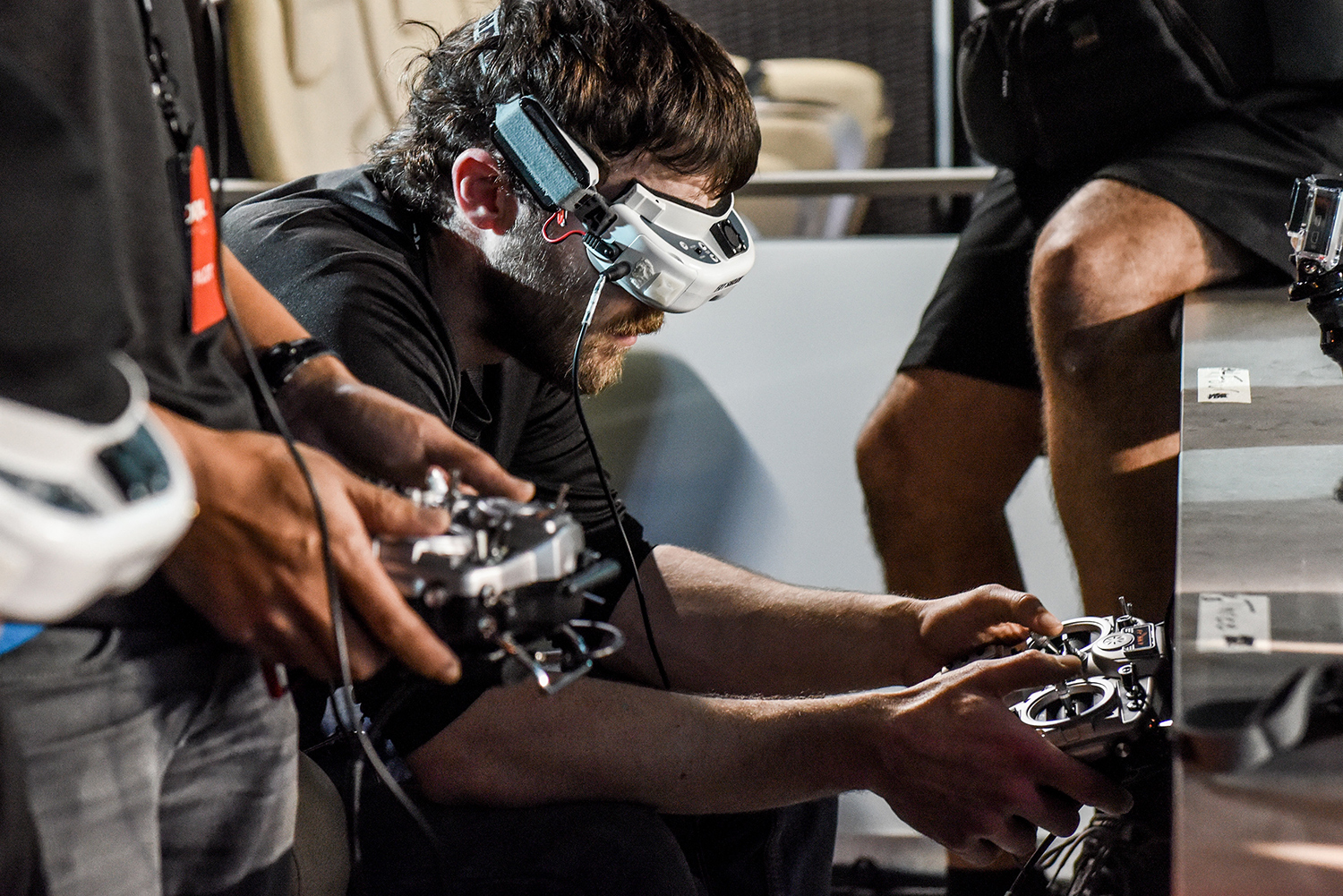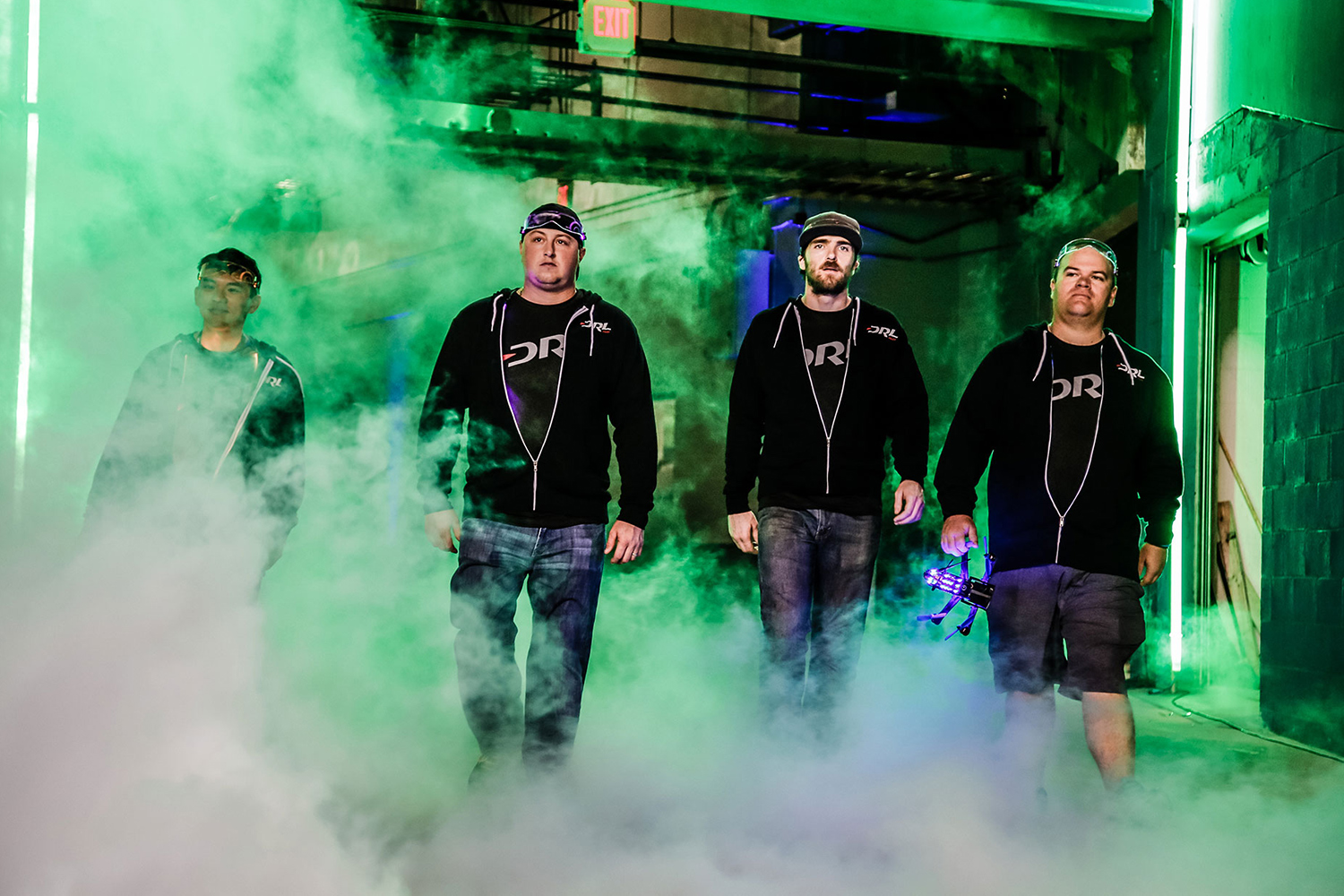Each drone pilot in the DRL wears goggles that display a live video feed from their drone as it speeds around the track. League officials have sanctioned the official vehicle for competition, called the DRL Racer 2. It’s equipped with a standard-definition camera for the pilot’s video feed, and HD cameras that will help DRL producers cut together compelling video feeds for playback and promotional purposes. And colored LED lights on the body of the DRL Racer 2 help boost visibility when the drones are racing around league courses at top speeds.
Issuing official DRL Racer 2 drones to each pilot is one of the league’s strategies to level the playing field, instead of letting pilots supply their own equipment. The DRL hopes that introducing regulations similar to those used in professional sports leagues or even car racing competitions could help bring legitimacy to drone racing, even in its infancy. “We’re committed to building the best drones, and most inspiring courses, and creating the ultimate proving ground for the world’s greatest drone pilots,” said DRL Founder and CEO, Nicholas Horbaczewski.
As a sport, drone racing still faces technical issues that could hold it back. The DRL is tackling those problems head on by building custom systems and bespoke drone equipment. Product Director Ryan Gury even designed the DRL Racers’ radio communications systems from scratch. So far, the DRL has been able to raise more than $8 million in funding to bring its 2016 slate of competitions to life. If all goes according to plan, the first event will launch at the Dolphins’ stadium in Miami on February 22, followed by another race in Los Angeles in March.
